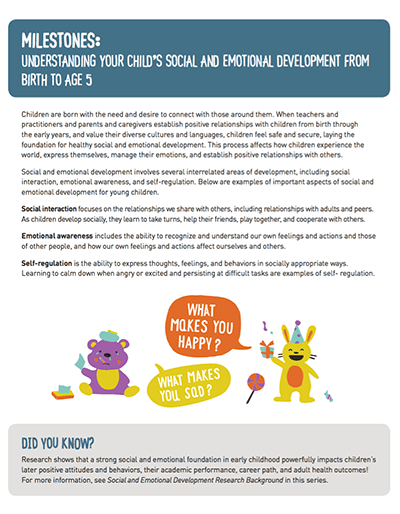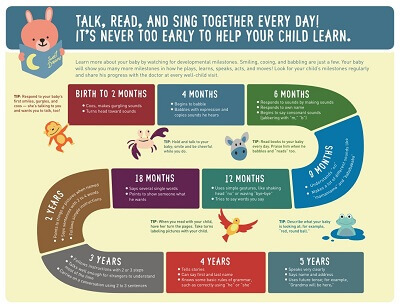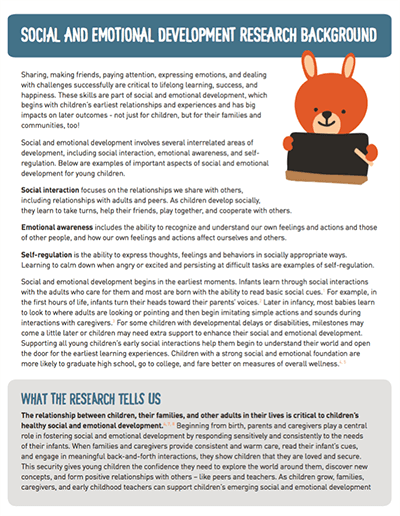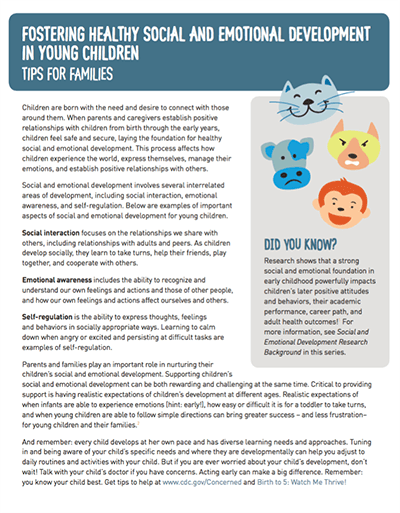Milestones: Understanding Your Child’s Social and Emotional Development from Birth to Age 5

Children are born with the need and desire to connect with those around them. When teachers and practitioners and parents and caregivers establish positive relationships with children from birth through the early years, and value their diverse cultures and languages, children feel safe and secure, laying the foundation for healthy social and emotional development. This process affects how children experience the world, express themselves, manage their emotions, and establish positive relationships with others.
Social and emotional development involves several interrelated areas of development, including social interaction, emotional awareness, and self-regulation. In this tipsheet are examples of important aspects of social and emotional development for young children.


